Sailing to Bermuda with My Father and Boyfriend
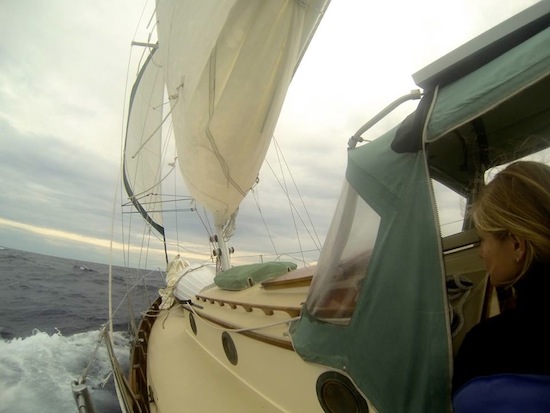
“Isn’t that going to be….awkward?” By the time we set sail on October 20, 2013, this was a question I had already heard a thousand times. But on that brisk, October morning, ‘awkward’ was the farthest thing from my mind. I was busy burning the image of land into my brain–my last sight of land. I was memorizing the trees painted against the sky, the cars parked quietly in their sleeping owners’ driveways, the color of the marsh grass. I was soaking it all in because I knew it would be my last view of anything terrestrial for many days. We were headed out to sea. We were headed for Bermuda.
The sail from Cataumet, Massachusetts to St. George’s, Bermuda takes an estimated seven to ten days. It was by no means the longest I had ever been offshore. During the summer of 2012, shortly after graduating from high school, my father and I embarked across the Pacific from Hilo, Hawaii to San Diego, California. We were on ‘Skye,’ a 32 ft. Lyle Hess, Bristol Channel Cutter. The boat had no engine, so when the North Pacific High Pressure System decided to settle over us and knock out all of our wind, sit we did. We sat, in fact, for days. The trip from Hilo to San Diego is estimated to take 21 to 27 days – it took us 40.
When on shore, if you get hurt you can call an ambulance, if there’s a fire you can call a fire truck, if someone threatens you, you can call the police. At sea, there is no one readily available to help you.
When setting sail from Cataumet though, things were a bit different. Our vessel, named Amica, was a 28ft. Bristol Channel Cutter. Though our size had dwindled, our crew had grown. Peter, my boyfriend, had joined my father and me on this trip. Other than sailing around Pleasant Bay with me in my mother’s 14 ft. Bay Bird once or twice, Peter had no sailing experience. I myself had very little offshore experience, having only the snail-paced Pacific trip for reference. This made for an interesting dynamic.
There are many differences between life ashore and life at sea. The first and foremost though, has got to be the lifestyle. My mother has always joked that when sailing, “You wake up in the morning and you only care about two things: what the weather is, and what’s for lunch.” I’d have to agree. Out at sea, there are no cell phones or e-mails. There are books–lots of books. The three of us became a floating book club, reading and discussing everything from Stephan King, to Gary Jennings, to Capt. Joshua Slocum. We often played cards. Hearts and Rummy were our favorites. All three of us are pretty competitive people, so card games usually included trash talk and bribery.
The simple life at sea is wonderful, but it does bring us to the next huge difference between shore life and ocean life. When on shore, if you get hurt you can call an ambulance, if there’s a fire you can call a fire truck, if someone threatens you, you can call the police. At sea, there is no one readily available to help you. Our ‘abandon ship’ procedure went like this: Peter and my father would grab the life raft. It was rolled into a gigantic tube down below in our cabin. It was heavy because it was packed with food, water, flares, a knife, etc. They would carry it up on deck, tie it firmly to the boat, and yank a line to inflate it.
I, meanwhile, would be down below, grabbing our EPIRB (Emergency Position-Indicating Radio Beacon), a floating cube with a gigantic antenna. “If we abandon ship you hold onto that thing as if your life depends on it,” my father told me. “Because it does.” While we all were supposed to “step-up” into the life-raft (you are never to abandon ship until it is absolutely necessary), my father would cut it from the sinking vessel, and I’d activate the EPIRB.
The three of us became a floating book club, reading and discussing everything from Stephan King, to Gary Jennings, to Capt. Joshua Slocum.
The EPIRB sends out a radio beacon, which the nearest Coast Guard Station would hopefully pick up. They’d eventually fly a plane overhead to get our exact position. If there were no other vessels in the area, the Coast Guard would send out one of their own ships, and depending on how far offshore we were, it could take days for them to reach us.
As a daughter, I am used to depending on a parent to keep me safe. Trusting my father, a lifelong sailor, was not difficult. Peter and I had never been in this kind of relationship though. On a dark, stormy night while he was up on watch, I lay nervous in my bunk. Was he wearing his harness? Would he wake my father if he needed assistance? Was he paying attention to those ship lights slowly growing in front of us? What if he got seasick again? What if he fell asleep on watch? Of course, these fears were ridiculous. Peter, having just completed a three-month Outward Bound course, knew perfectly well how crucial being responsible was. The three of us were all dependent on one another. While my confidence wavered under the pressure of such responsibility, my father never once doubted either of us. He continued to answer our questions, listen to our concerns, and ultimately trust us completely.
It took us 10 days to reach Bermuda. We spent about a week and a half there exploring, re -stocking, and waiting for favorable weather. Eventually we left for the Caribbean. We sailed into Admiralty Bay, Bequia 15 days later. That passage was a mixed bag. We started off well, with a nice wind carrying us out off of Bermuda. Soon enough though, we hit unpleasant weather. For three full days, we sailed along on bare bones (it would have been unsafe to hoist sails in such strong wind, yet Amica was able to continue to head in the right direction because the wind was strong enough to push our hull along at five to seven knots). We closed up all the hatches and yet water still gushed below. There was no order whatsoever to the seas.
The three of us were all dependent on one another. While my confidence wavered under the pressure of such responsibility, my father never once doubted either of us. He continued to answer our questions, listen to our concerns, and ultimately trust us completely.
Sitting in the cabin was like being tossed around on a carnival ride. Up on deck, my life was dependent on my harness. I sat steering in the cockpit one night, watching as Amica was lifted up on top of swells and then went careening down into valleys. Then, I spotted a wave that somehow seemed different. It was not coming from the same direction as the others, and its timing just did not make sense. In slow motion I thought to myself, “I don’t think we’re going to float over this one…something seems off” and BAM. The colossal rogue wave broke over our boat. I ducked into the cockpit and looked out in front of me. The wave had come over our port side, and was now crashing to starboard. I, along with the entire hull, was in the tube of the wave.
When it all ended, I sat staring at my harness. If it were not for that simple clip, I would have been washed overboard. A few minutes later, my father opened the hatch and popped his head up.
“Did you see that one?” He asked. I gave him a blank stare. Was he kidding? Of course I saw it–it almost killed me! “It came through the vent and soaked my bunk!” He was annoyed, so I began to laugh.
Spending two months on a 28 ft. sailboat with my father and my boyfriend was not something I could have even predicted the outcome of.
By the time the weather calmed, we were still not sure what it had been in the first place. My father told us it looked very similar to how hurricanes begin. Our cabin was drenched with rain and sea water, and wet newspaper was everywhere, failing to dry anything, and none of us had eaten in three days. We were now in the trade winds though, so it would be easy cruising from here.
When we made it to port in Bequia, we learned of a tropical storm that had passed a few hundred miles offshore of Bermuda. This is what we had sailed in for three days.
For the next month, we cruised north through the Caribbean. After Bequia, we visited Martinique, Dominica, Guadeloupe, and Antigua. In late December, Peter and I flew home from Antigua, leaving my father and Amica to continue their journey. Getting on the plane was one of the hardest things I have ever done. I thought back to that summer, when I had first asked my father if he would consider taking Peter along with us. I was so nervous and worried to even present the idea. Spending two months on a 28 ft. sailboat with my father and my boyfriend was not something I could have even predicted the outcome of. But having done it, it is certainly something I would do again.

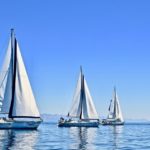
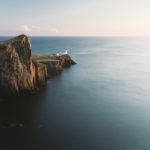
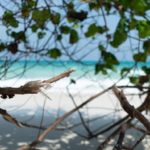
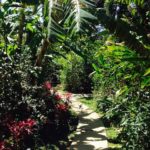

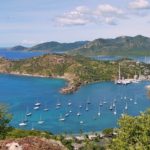
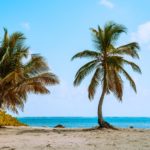
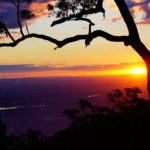
Great piece!